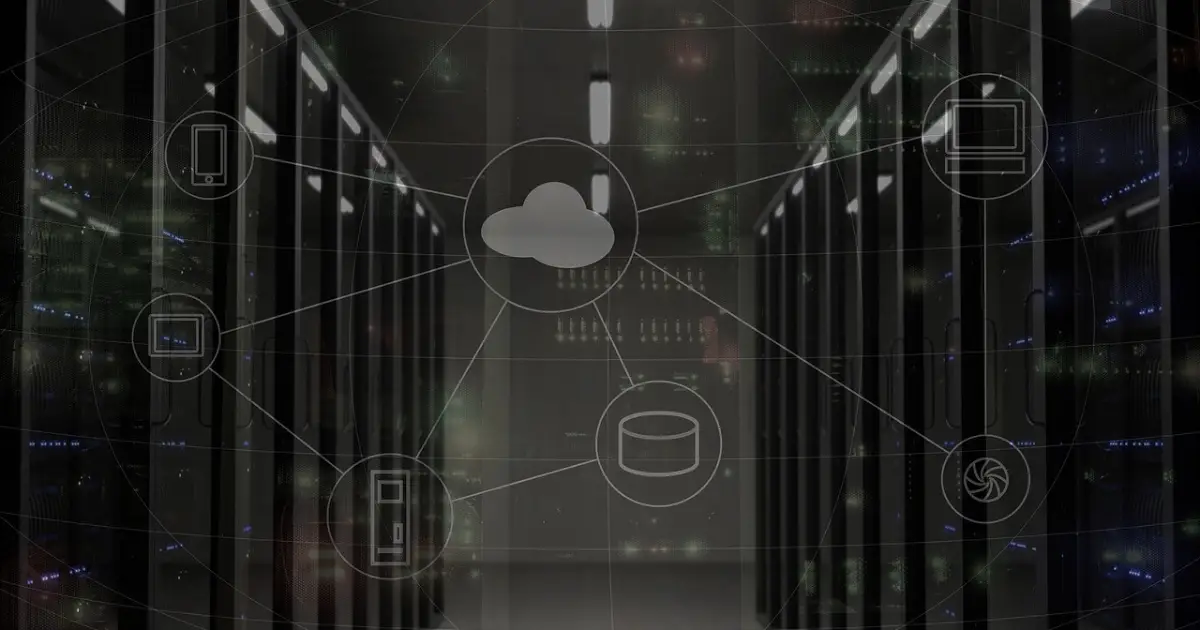focus notes


We have compiled 10 examples of cloud migration! Explanation of benefits such as contributing to work style reform

table of contents
“We are considering moving to the cloud, but what kind of examples are there?”
“I want to know the benefits in detail.”
Some people who are considering moving to the cloud may have questions like the ones above. There are many examples of cloud migration in both the public and private sectors.As you can see from the examples, cloud computing can improve work efficiency and productivity. Another feature of cloud services is that they can be linked with other systems to share and utilize data. It will also help you solve problems and improve your company.
However, it is important to deepen your understanding of the cloud in order to proceed with cloud migration in the best way for your company. Let's understand what can be achieved with cloud computing through each case study.
This article explains examples of cloud computing in general companies and local governments, the benefits of cloud computing, and answers frequently asked questions about cloud computing. Please read this article if you would like to know the effects of cloud computing and success stories.
Examples of cloud migration [general company edition]
We will explain the following as an example of cloud migration in a general company.
- Migration to cloud accounting
- Improving productivity through cloud sharing
Migration to cloud accounting
There are cases where cloud accounting has been used to automate and streamline accounting operations.As a result of an interview survey conducted by the Small and Medium Enterprise Agency with small and medium-sized enterprises, the following responses were received regarding the use of cloud accounting.
Our company has moved to a cloud accounting system, which can be linked with deposit data, and its specifications are extremely easy to use. It seems that they are currently working on API collaboration with various financial institutions, but if they can operate it while ensuring security, it would be a lot less troublesome.
Source: Small and Medium Enterprise Agency | Towards digitalization of small and medium-sized enterprises | Page 32 (as of February 19, 2024)
The companies that answered above are linking cloud accounting systems and internet banking. Cloud accounting is mainly used for general accounting operations such as sales management and issuing and receiving invoices. By linking with internet banking, you can check your deposit data in real time, making it easier to manage your income and expenditures.
In addition, security concerns have been pointed out in the above case. As systems support corporate management, security measures are required to prevent unauthorized access and information leaks. When implementing a cloud accounting system, consider not only functionality but also security.
Improving productivity through cloud sharing
There are also cases where cloud sharing has improved productivity.A construction-related company based in Tokyo has achieved the following by utilizing a cloud sharing system.
Regarding the "cloud sharing function for construction information," the latest version of drawings can be shared between head office and field staff, reducing rework in purchasing ordering operations.
Additionally, by sharing the construction management system ledger with subcontractors, it has become possible to save time and go partially paperless.
LINEWORKS has made work more efficient by allowing head office and field staff to instantly share information (internal documents, photos, drawings, etc.) using smartphones.
Additionally, as a BCP countermeasure, we conduct mock drills several times a year, making it possible to confirm the safety of all employees in the event of an emergency.
Source: Ministry of Land, Infrastructure, Transport and Tourism | Collection of case studies for promoting work style reform in the construction industry | Page 22 (as of February 19, 2024)
*LINEWORKS is a trademark or registered trademark of LINE Corporation and LINE WORKS Corporation.
In the above example, a construction management app is used along with a cloud sharing system. This company had a problem where it was difficult to understand the latest version of the drawings when there were many revisions to the drawings.
Therefore, we have made it possible to check the latest version of drawings by managing on-site construction information with a construction management app and sharing that information with a cloud sharing system. By updating drawings appropriately on the system, it becomes easier to share the latest version of the drawings, and it is possible to prevent mistakes such as incorrect drawings. In addition, purchasing orders based on drawings can now be carried out accurately, leading to a reduction in rework due to incorrect drawings.
Furthermore, by sharing information on smartphones, anyone can instantly check internal documents and drawings. This allows for smoother information sharing and leads to more efficient work.
In this way, cloud sharing systems enable rapid information sharing in real time. In business, information is necessary in every situation, including daily operations and management decisions. Utilizing cloud services will enable accurate and quick information sharing.
Examples of cloud migration [local government edition]
We will explain the following five examples of cloud migration in local governments.
- Fuji City and Fujinomiya City, Shizuoka Prefecture
- Okazaki City/Toyohashi City, Aichi Prefecture
- Takaishi City, Tadaoka Town, Tajiri Town, Osaka Prefecture
- Yamaguchi Prefecture 4 cities 1 town municipal cloud
- Saga prefecture city/town core information system
Fuji City and Fujinomiya City, Shizuoka Prefecture
There is an example of Fuji City and Fujinomiya City in Shizuoka Prefecture moving their administrative affairs to the cloud.Fuji City and Fujinomiya City had various issues due to using their own system. The issues and the solutions they came up with are as follows.
| Challenges of Fuji City and Fujinomiya City | Problem solving means | |
|---|---|---|
System side | Cost and human resources when renovating the system using general-purpose equipment | Migration to standard packaging/slimming |
Business Aspects | Ensuring data integrity and system integration | Informatization consulting |
Operational aspects | Complicated operation and maintenance due to clutter of systems | Outsourcing of operation and maintenance |
Reference source: Cabinet Office | Fuji City and Fujinomiya City Joint Computerization Project ~ Introduction of local government cloud ~ | Page 5 (as of February 19, 2024)
We are moving toward cloud computing to solve the above issues, reduce costs, and optimize systems. The system has also been completely reviewed. This not only makes it possible to package and streamline the system, but also prevents the system from becoming too crowded.
In reviewing the system operation structure, we are considering a system that also incorporates external operators, and clarifying matters such as maintenance, operation, and response in the event of a failure. By outsourcing maintenance and operation to external specialized companies, it is possible to reduce the burden on administrative staff and ensure appropriate operation based on specialized knowledge.
System optimization through cloud computing is being used in core systems that handle resident information and welfare-related matters, as well as in internal information systems that manage the personnel affairs of civil servants. By moving a wide range of operations to the cloud, we are building a system that allows easy-to-use systems to be used at low cost.
Okazaki City/Toyohashi City, Aichi Prefecture
Efforts were made to share information systems in Okazaki City and Toyohashi City in Aichi Prefecture.The system was facing problems such as the complexity of the system due to modifications to comply with legal revisions, and soaring maintenance and operating costs. Coupled with other problems such as the inability of city employees to develop and operate the system and the city's tight finances, the city was under pressure to review the system in order to reduce costs and improve operations.
Therefore, we shared the system based on the following problems and solutions.
【problem】
①Sharing the purpose. Practical aspects and other issues (cooperation method, vendor selection, contracts, etc.).
② Unification of system operation schedule.
③Establishment of a promotion system for realization.
④Distance, etc. (geography, communication) with the partner of collaboration.【solution】
① Measure the effectiveness of problem solving in advance (cost-effectiveness, etc.).
② Select a proven package system to minimize customization and shorten the lead time.
③Establish a management department within the operational division and build a system to promote collaboration. Coordination with vendors as well.
④ Utilize web conferencing systems and information sharing tools.
Source: Cabinet Office | [Okazaki City and Toyohashi City, Aichi Prefecture] Sharing of information systems in core cities (as of February 19, 2024)
Okazaki City and Toyohashi City are not adjacent and are geographically separated. Due to the physical distance, there were problems with scheduling and communication when sharing the system.
Therefore, we will build a system to promote system sharing, share the purpose of system introduction, and organize methods. Furthermore, we have achieved smooth collaboration even over long distances by using web conferencing and information sharing tools.
Another feature of this case is that the system to be introduced is a proven package system. By minimizing customization as much as possible, we have shortened the time required for implementation.
This shift to the cloud has led to cost reductions in system operations and business improvements.
Takaishi City, Tadaoka Town, Tajiri Town, Osaka Prefecture
In one case, the cities of Takaishi, Tadaoka, and Tajiri in Osaka Prefecture have jointly developed core business systems in preparation for disaster risks.Takaishi City, Tadaoka Town, and Tajiri Town are geographically separated municipalities. Both are municipalities facing Osaka Bay, and if a Nankai Trough mega-earthquake were to occur, there would be a risk not only of an earthquake but also of a tsunami. Therefore, as part of creating a city that is resilient to disasters, local governments have collaborated with each other to share core business systems.
The joint venture has the following benefits:
[Disaster-resistant system]
・Using a secure data center improves the integrity of important information. We have built a system that ensures business continuity in the event of a large-scale disaster and helps with prompt recovery and reconstruction efforts.
- Data centers will be located in Kanto (main) and Western Japan (secondary) to disperse disaster risk.
Source: Cabinet Office | [Three cities and towns in Osaka Prefecture] Sharing of central city-led information systems (as of February 19, 2024)
Cloud services do not require you to install a server in-house. The physical servers for cloud services are installed in data centers. Since there are no servers in local government buildings, important data will not be lost even if the building is damaged by a disaster.
However, there is a risk that the data center may be damaged. For this reason, we are distributing disaster risk by deploying them in the Kanto region and western Japan, which are geographically far apart.
In this way, by moving to the cloud, we are building a system that can quickly recover in the event of a disaster.
Yamaguchi Prefecture 4 cities 1 town municipal cloud
There is also a case where four cities and one town in Yamaguchi Prefecture shared and used a municipal cloud.The following five local governments participated in this initiative.
- Shunan City
- Kudamatsu City
- light city
- Yanai City
- Abu town
Among these, Shunan City participated in the shared use of the local government cloud due to the following background and issues.
(1) Strict financial management, increased burden of information system-related expenses and securing of personnel
(2) Business continuity in the event of earthquakes, fires, etc.
(3) Request for new citizen service provision
(4) Reconstruction of aging government buildings with low earthquake resistance
Reference source: Cabinet Office | About the cloud for 4 cities and 1 town in Yamaguchi Prefecture | Page 3 (as of February 19, 2024)
We participated in the local government cloud service to resolve issues such as the increased burden of information system-related expenses and the creation of a system that can continue operations even in the event of a disaster. We are also considering mutual support systems in the event of a disaster, with the aim of making even more effective use of the local government cloud.
Saga prefecture city/town core information system
There is also a case where Saga Prefecture took the lead in introducing a municipal core information system.In the previous case, it was the local government at the city or town level, but in Saga Prefecture, the prefecture took the lead in moving to the cloud. The prefectural government took the initiative because of the challenges faced by the difficult financial situation, the high cost of information systems, and the lack of progress in improving resident services and operational efficiency. Therefore, we aimed to reduce costs and improve operational efficiency by sharing information systems across all cities and towns.
The effects in this case are as follows.
① Southern district local government cloud (Takeo City, Kashima City, Ureshino City, Omachi Town, Kohoku Town, Shiroishi Town)
Core system: 40% reduction (▲approximately 650 million yen)② Northern District Municipality Cloud (Karatsu City, Genkai Town)
Core system: 51% reduction (▲approximately 670 million yen), Internal system: 55% reduction (▲approximately 75 million yen)
・The waiting time for residents for procedures has been reduced by about 31%, and the time for staff to process tasks has been reduced by about 30%.・The life cycle cost (total costs for 10 years after operation) has been reduced by about 27% (*Temporary installation cost) (including all)
Source: Cabinet Office | [Saga Prefecture Municipality Core Information System] Cloudization of information systems led by the prefecture (as of February 19, 2024)
In this case, the local government cloud is introduced separately for the southern and northern parts of the prefecture. Although the number of participating municipalities is limited because each municipality's system update timing is taken into account, cost reductions of more than 600 million yen were achieved in both districts.
Furthermore, in the northern region, staff have been able to reduce their processing time, which in turn has led to shorter waiting times for residents. This improves operational efficiency and the convenience of resident services.
Advantages of moving core systems to the cloud
There are two main benefits to moving core systems to the cloud:
- Useful for work style reform
- Easy to introduce
Useful for work style reform
Moving your core system to the cloud can be useful for work style reform.Not only can it automate and streamline operations, but it can also promote remote work.
By moving to the cloud, you can centrally manage information related to your business. Easily access the information you need, saving you the trouble of searching for data and materials. Furthermore, by linking related business data, you can save yourself the trouble of visiting the relevant departments to check directly or searching for paper documents.
For example, by linking accounting and order-related data, you will be able to manage expenses and sales for a single order all at once. Automating and increasing efficiency can reduce the burden on employees and improve productivity.
Additionally, cloud services can be accessed anywhere there is an internet connection, so you can even use them while working remotely from home. There will be more options for working styles, and remote work will be promoted.
Easy to introduce
Another advantage of cloud computing is that it is easy to implement.Cloud services can be used as long as there is an internet connection, and there is no need to set up an environment or develop a system.
Traditional on-premises systems require you to install servers in-house or develop your own systems. Not only do they incur costs for equipment and system development, but they also tend to take a long time to complete. Therefore, when implementing the system, it was necessary to secure funds in advance and consider a long-term schedule from the planning of the implementation plan to the actual completion of the implementation.
Cloud services can be used immediately after contracting as long as you have an internet connection. There is no need to purchase equipment such as servers at the time of introduction, and costs will be significantly reduced. Additionally, the system is packaged so there is no need to develop it. Depending on the service, you can optionally add functions or strengthen security measures, so you can customize the system to suit your company.
However, this is just customization within the provided functions. Functions that are not included in the service's basic functions or options cannot be added. When introducing it, check to see if it has the features you want and if it can be added as an option.
Frequently asked questions when moving to the cloud
We will explain frequently asked questions when migrating to the cloud.
- What is cloudification?
- Please tell me the type of cloud
What is cloudification?
Cloudization refers to migrating a company's proprietary systems and servers that manage its information to services that can be accessed via the Internet.Cloud computing primarily enables you to achieve the following:
- Reduction of system introduction/management costs and labor
- Streamlining and automating operations
- Centralized management of business data
- Data preservation during disasters
Cloud services utilize packaged systems provided by cloud service providers. As mentioned earlier, it can be used in any environment connected to the Internet, so it can be introduced in a short period of time and at low cost.
The cloud service provider handles system maintenance and troubleshooting when problems occur, so there is no need to do it yourself. This will reduce the burden of managing your own systems and servers.
Another feature is that systems can be linked together to centrally manage data. You can use the necessary information at the right time, making your work more efficient. Depending on the service, automatic processing is also possible based on the data content.
Furthermore, since no servers are installed within the company, data on the cloud is preserved even if the company is affected by a natural disaster or fire. By protecting the data necessary for business operations, rapid recovery after a disaster is possible.
As you can see, cloud computing has many benefits. It can be useful for solving your company's problems and reducing costs.
Please refer to the article below for details on cloud migration.
What is cloud migration? Explaining the differences, advantages, disadvantages, and implementation examples with on-premises type
Please tell me the type of cloud
There are three main types of cloud:
| Cloud type | Features |
|---|---|
public cloud | Cloud that is openly provided to both companies and individuals |
private cloud | Cloud occupied by a specific company |
hybrid cloud | Combining different types of clouds |
A public cloud is a cloud that is provided to both companies and individuals. Resources such as storage and network lines are shared, making it easier for cloud service providers to manage and providing services at low cost. While it can reduce the cost and administrative burden on the user side, it is necessary to wait for the cloud service provider to respond to troubleshooting issues.
A private cloud is a cloud that is owned by a specific company. You can build the optimal cloud environment for your company. However, since the management is done in-house, it is necessary to secure management costs and human resources.
Hybrid cloud refers to the use of a combination of different types of clouds, such as public clouds and private clouds. You can flexibly build a cloud environment according to the advantages and uses of each different cloud. However, it is important to note that the costs and management items required for each type of cloud differ, which can make management more complicated.
Cloud services are available in the following forms:
| Service type | Features |
|---|---|
SaaS (Software as a Service) | Provide applications and software |
PaaS (Platform as a Service) | Provides the environment necessary for developing applications and software |
Infrastructure as a Service | Provides infrastructure such as virtual hardware and networks |
SaaS is a service that allows you to use applications and software provided by cloud service providers over the Internet. The system is packaged and leveraged within the functionality provided.
PaaS is a service that provides a development environment via the Internet. To develop applications and software, you need an OS, network, etc. Since this service provides a set of development environments, you can start developing right away.
IaaS is a service that provides IT infrastructure via the Internet. You can create the optimal infrastructure environment for your company without purchasing physical equipment.
It is easy to confuse the type of cloud with the form of cloud service, but please note that they are strictly different.
summary
So far, we have explained some examples of cloud computing. By moving to the cloud, you can centrally manage information and streamline your operations.Since the installation cost can be kept down, it will also lead to a reduction in the cost of system management. Additionally, since it can be used regardless of location or device as long as it is connected to the Internet, it is useful for work style reform.
In order to make effective use of cloud services, it is important to choose a service that has the functions and performance that your company needs. After sorting out what you want to achieve through cloud computing and the functions you want, choose the cloud service that is best suited for your company. If you have any concerns about cloud migration, please feel free to contact us.
Achievements left behind
48 years since its establishment.
We have a proven track record because we have focused on what is important.
It has a long track record in both the public and private sectors.
Number of projects per year
500 PJ
Annual number of business partners/customers
200 companies
Maximum number of trading years
47 years
Total number of qualified persons
1,870 people






